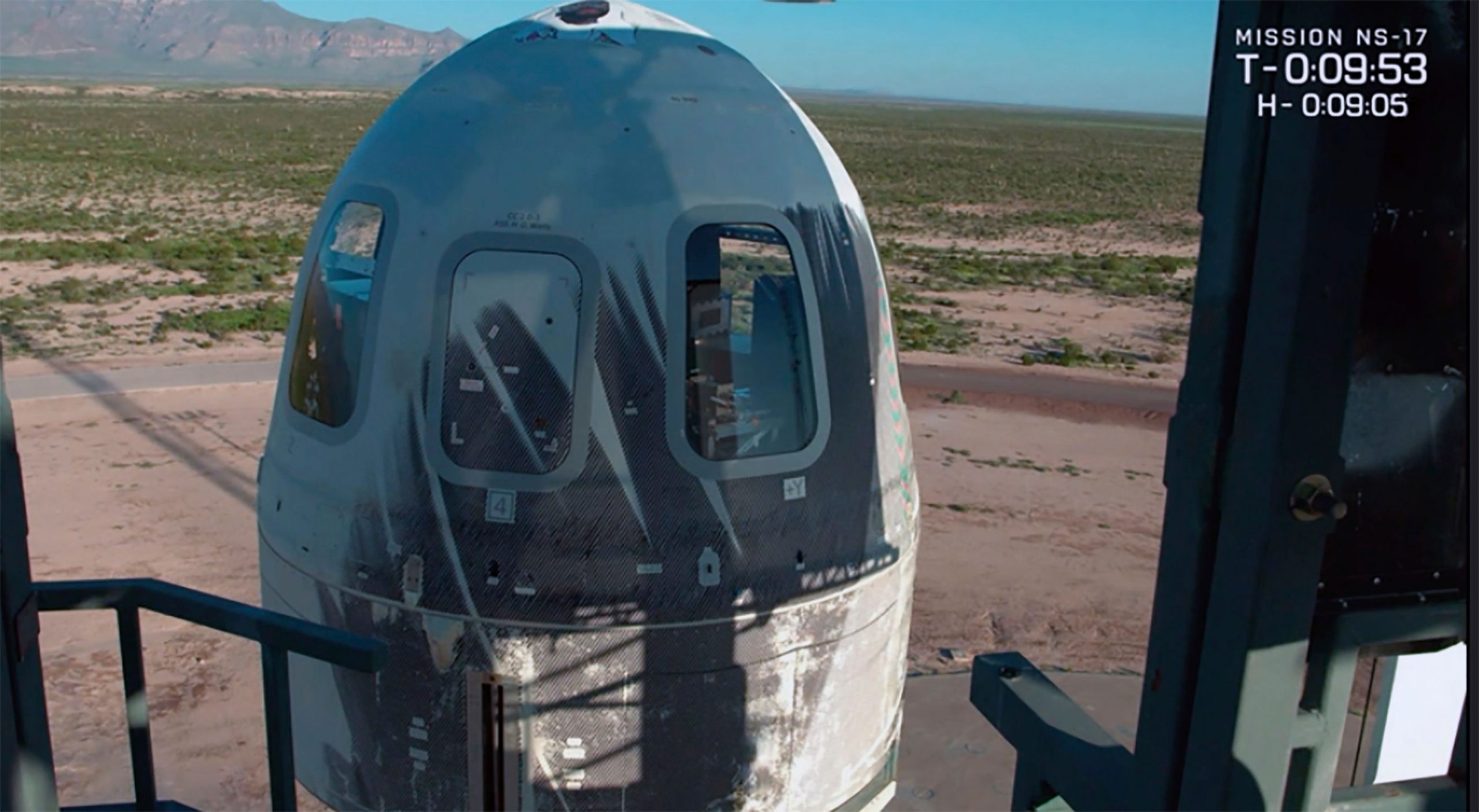A month after sending founder Jeff Bezos on the company’s first passenger flight, Blue Origin on Thursday, launched paintings by Ghana artist Amoako Boafo into space. No one was aboard for Thursday’s 10-minute flight, which included other experiments from NASA and others.
The artwork, on three parachute panels on the outside of the capsule at the very top, included Boafo’s self-portrait amongst others of his mother and a friend’s mother, explaining “a mother’s love comes from a place that is out of this world,” said Blue Origin launch commentator Kiah Erlich, a company official.

This launch marked the 17th test flight for New Shepard, the suborbital rocket developed by Blue Origin. The vehicle, 60-foot-tall, took off from the company’s facilities in West Texas. It soared more than 60 miles over the landscape before coming to a pinpoint, upright landing at a nearby concrete pad.
Also read: NASA releases ‘cosmic rose’ visuals, and the Internet is loving it
Schoolchildren from Ghana tuned into the launch webcast, according to Blue Origin. The Utah-based Uplift Aerospace Inc. commissioned Boafo’s work, “Suborbital Triptych”, as part of its new art-in-space program.

The paintings were on triangular-shaped panels a few feet in size and detached from the capsule when the parachutes were deployed. A company spokeswoman said they would be recovered from the desert floor.
On July 20, Blue Origin used another rocket and capsule to launch Amazon founder Bezos, his brother and two others who, at ages 82 and 18, set records for the oldest and youngest in space.
Also read: Asteroid to make its closest flyby to Earth for at least next 65 years
Blue Origin offered no specific date Thursday for the next passenger flight, but reported nearly $100 million in ticket sales to date. The company — which is not divulging ticket prices — plans to alternate between tourist and research flights, sometimes with the scientists aboard.
It was the second New Shepard flight for the lunar-landing experiment, which was mounted near the top of the booster and tested lasers and other sensors meant to ensure a pinpoint moon landing for astronauts. Also flying was equipment for turning astronauts’ space trash into gas for recycling into fuel or dumping overboard.
With inputs from the Associated Press







